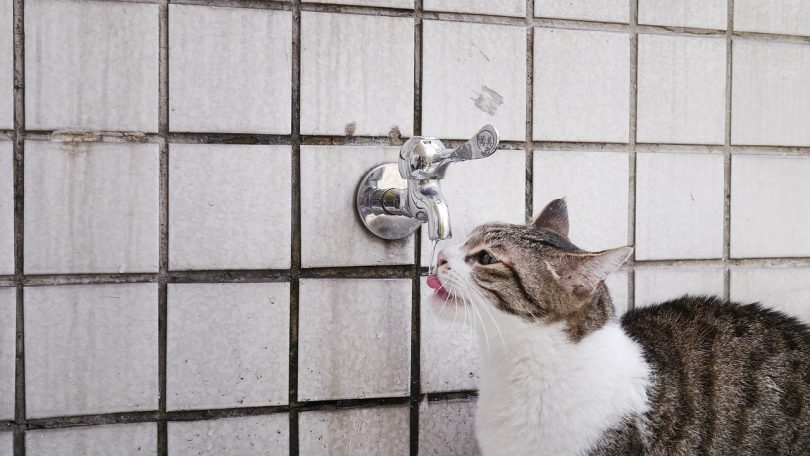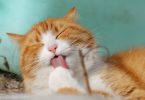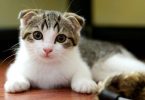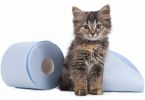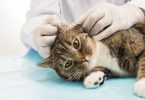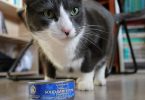Cats are incredibly resilient animals. But just like humans, they cannot survive for long without food or water. Read this article to learn about cat dehydration and how to protect your pet cats from it.
Water is Essential to a Cat’s Survival
Cats tend to loathe getting water on any part of their body. (Just try washing your lovely furball in a tub!) However, cats do need to drink a surprising amount of water to survive.
Zoologists believe that cats evolved in desert conditions. So they can last without food or water for slightly longer than some animals. Then again, just like humans and dogs, cats require a steady supply of clean water every day to survive.
It’s estimated that a cat can last up to three or four days without water. It’s the same as dogs. In comparison, a human can last up to a week without water.
However, the above estimate is relative. Individual factors may play a role in how long a cat may survive without water. For example, a more active cat is likely to dehydrate faster than a cat that sleeps all day.
How Much Water Do Cats Need?
How fast a cat becomes dehydrated depends on the amount of water a cat requires. It’s hard to give an average here. That’s because the amount of water a cat needs depends on these factors:
- How much the cat eats
- Its size
- Climate at home
- The amount of dry food in its diet
A cat’s body is 80 percent water. The more kilocalories it eats, the more water it needs to burn those calories and maintain a healthy level of metabolism. Size matters, too. A cat that is larger would require more water than a smaller cat.
Cats living in hot, tropical climates would require more water. The heat would make them sweat through their paw pads and nose. If a cat mostly eats dry food, which is very low in water, it would need more water in its diet.
On average, veterinarians say that a cat needs to drink 2 to 5 ounces of water on top of the food it eats. Ideally, an adult cat needs to drink the millilitre equivalent in water the amount of calories it eats per day.
What Happens When Cats Don’t Get Enough Water?
Cats typically get most of the water they need from their food. The primary liquid intake of a wild cat comes from its prey. That’s why a kitty at home doesn’t have a big thirst drive.
Some owners may misunderstand a cat’s lack of interest in water as an indication that felines don’t need much water. This is simply not true. When a cat doesn’t get enough water for three days at least, it becomes dehydrated.
Dehydration is a condition where the amount of fluids and minerals in the body becomes imbalanced. Dehydration can be fatal in cats as it is in humans. When a cat becomes dehydrated, its body goes into a form of shock. It becomes difficult for the cat’s body to carry on life-sustaining activities such as expelling waste and regenerating cells.
A cat will lose body mass when it is dehydrated. If the condition is not treated on time, the cat will not survive.
What Makes a Cat Dehydrated?
Lack of water is the main cause of dehydration in cats. However, cats don’t get dehydrated only by not drinking enough water. Fluid loss by other means may also cause dehydration in cats.
Here is a list of most common causes of dehydration in cats:
- Lack of access to clean, drinking water
- Eating an exclusively dry food diet without access to water
- Fluid loss caused by vomiting or diarrhea
- Overheating in hot weather
Some diseases may also cause cats to shun food and water, leading to conditions like dehydration. Cats that suffer from cancer, hyperthyroidism, or kidney disease may also suffer from dehydration. Diabetic cats should be closely monitored for dehydration as well.
Elderly cats are prone to dehydration as well, most likely because it’s difficult for them to access water. Nursing cats are also at risk of dehydration without the right amount of food and fluid.
Symptoms of Dehydration in Cats
Dehydrated cats are not as active as healthy cats. You can tell if a cat is dehydrated by these symptoms:
- Lethargy or excessive sleepiness
- Loss of appetite
- Not being as active as usual
- Sunken eyes
- Dry mouth
- Frequent panting
- High heart rate
- Depressive mood
- Lack of skin elasticity
There’s an easy test you can perform to check if a cat is dehydrated: Gently lift the cat’s skin from its neck or shoulder area. In a healthy cat, the skin quickly returns to the original position. In a dehydrated cat, the skin will be very slow to snap back into position.
If you notice a cat experiencing any symptom of dehydration, immediately take the cat to a vet. Don’t try to get a dehydrated cat to drink water. The right type of fluid must be administered to get the electrolyte balance in the body back on track.
Treating Dehydration in Cats
A vet is the best bet to treat a dehydrated cat. The vet would first administer a fluid like saline to the dehydrated cat. It helps the cat’s body balance the level of fluid and minerals. The fluid is usually given through an IV, where the needle goes in a blood vessel, or as a subcutaneous fluid, where the needle is placed under the skin.
The cat would become less lethargic and more active as it becomes less dehydrated. Soon, it would be ready to drink water and eat wet food once more. Then, the fluid balance in the body would go back to normal.
A cat’s dehydration could be caused by an underlying condition, particularly a disease, like diabetes. In severe cases, deadly infections like Feline Infectious Anemia may cause fluid loss and dehydration. A vet would run tests to determine if such a disease is the cause of water loss.
How to Keep a Cat Well Hydrated
Cats are picky eaters. They are also picky water drinkers. Cat owners must take special care to ensure that their feline pets drink enough water. A cat must always have access to a clean bowl of fresh water. The bowl must be clean and you should wash it and fill it with fresh water every day.
Each cat in the household must have its own bowl of water. Just as you don’t like to drink water from a glass someone else has used, cats don’t like to drink from each other’s water bowls. They don’t share as dogs do.
Cats obtain most of their liquid from food, rather than by drinking water. Therefore, give your cat lots of wet food. If your cat eats dry snacks, give it more water. And make sure it drinks it.
Some cats may not drink from water bowls because the water is stagnant. Buy a pet water fountain for these nit-picky cats. Most animals prefer flowing water, mimicking their wild counterparts.
A cat may survive two or three days without food. However, a pet cat should not go even a day without water. Your cat must at least consume water with its food. If it continues to shun water, immediately take your cat to a vet.

